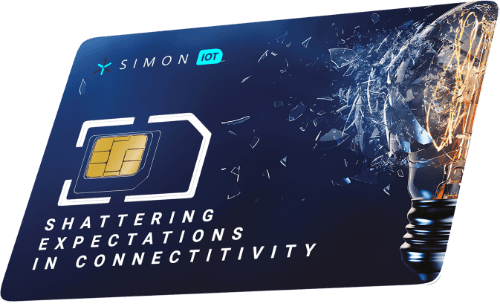Nb-Iot Sim Card IoT SIMs Any Device Anywhere
Low-power IoT connectivity protocols have emerged as a cornerstone for the enlargement and optimization of the Internet of Things panorama. Designed to cater to gadgets that operate on restricted power, these protocols emphasize effectivity to ensure longevity and reliability. The evolution of technology has amplified the necessity for low-power solutions across numerous purposes, ranging from smart agriculture to urban infrastructure.
LoRaWAN (Long Range Wide Area Network) stands out as one of the most acknowledged low-power IoT connectivity protocols. Characterized by its long-range capabilities, it can transmit knowledge over a number of kilometers with minimal energy consumption. The design of LoRaWAN is tailored for low-speed data transfer, making it best for applications where only small packets of knowledge have to be conveyed, such as sensor readings. This protocol facilitates wide-area protection while sustaining cost-effectiveness.
Another prominent player within the low-power IoT ecosystem is Sigfox. Like LoRaWAN, it's designed for low-bandwidth applications. Sigfox operates utilizing a unique radio expertise that allows gadgets to connect over massive distances without the necessity for vital energy. By relying on a community of base stations for communication, it ensures that units can transmit messages while consuming minimal energy.

NB-IoT (Narrowband Internet of Things) is a cellular expertise particularly engineered for low-power, wide-area networks. Unlike the aforementioned protocols, NB-IoT leverages existing cellular infrastructure, which supplies benefits corresponding to higher penetration in urban environments and enhanced reliability. It's significantly effective for purposes that require more frequent communications and can profit from greater data throughput compared to different low-power options.
Global Nb-Iot Sim Card IoT SIM
MQTT (Message Queuing Telemetry Transport) is another crucial protocol for low-power IoT connectivity. This lightweight messaging protocol is constructed for efficiency, permitting devices to speak in an optimized method. MQTT operates beneath a publish/subscribe mannequin which ensures that devices can send and obtain messages and not utilizing a direct connection to one another, conserving both power and bandwidth. It is widely adopted in eventualities where real-time data transfer is crucial.
CoAP (Constrained Application Protocol) is particularly designed to facilitate communication in resource-constrained environments, making it notably suited to low-power devices. It operates using a client-server model, enabling gadgets to exchange data seamlessly while maintaining minimal energy usage. This protocol is helpful for applications similar to smart house automation and industrial IoT, where low latency and environment friendly energy administration are essential.

Bluetooth Low Energy (BLE) has gained traction for its application in private and wearable gadgets. BLE is engineered for short-range communication, with a significant emphasis on conserving battery life. This protocol allows for frequent updates while maintaining power consumption low, which is particularly helpful in fitness trackers, smartwatches, and other private gadgets that want to maintain functionality over extended periods without frequent charging.
Zigbee, one other well-known low-power connectivity protocol, focuses on mesh networking. Its architecture allows units to speak through multiple nodes, successfully extending the vary and reliability of the community. Zigbee is especially efficient in smart house purposes, where numerous gadgets want to communicate seamlessly in an energy-efficient method. The mesh capability ensures that devices can preserve their connection even when considered one of them goes offline.
Sim Card For Iot Global IoT SIM Card
Weightless is a lesser-known protocol but equally significant in the low-power IoT panorama. It goals to provide an open standard for low-power connectivity throughout varied industries. Its design allows for enhanced go to these guys flexibility and interoperability amongst devices, making it appropriate for various applications ranging from asset monitoring to smart city initiatives. The protocol's low-power traits guarantee it could function effectively inside the resource constraints typical of IoT environments.
The landscape of low-power IoT connectivity protocols continues to evolve rapidly. With advancements in technology, manufacturers are increasingly looking for ways to reinforce efficiency while optimizing energy consumption. The ongoing refinement of those protocols ensures that they can accommodate the rising demands of various sectors, including healthcare, agriculture, and industrial automation.
Future tendencies in low-power IoT connectivity protocols may see an elevated push in the direction of synthetic intelligence and machine studying integration. Such integration could lead to devices that not solely communicate more effectively but in addition study from their environments and make autonomous selections primarily based on information patterns. As the need for real-time data processing intensifies, protocols might adapt to facilitate sooner, more intelligent communication.
Global Nb-Iot Sim Card Global IoT SIM Connected Devices

In conclusion, the advancement of low-power IoT connectivity protocols has paved the finest way for higher accessibility and effectivity in diverse applications. The unique strengths of various protocols cater to the specific wants of various environments and use circumstances. As innovation continues to reshape the landscape, these protocols will play a pivotal position in making certain that the promise of the Internet of Things is realized sustainably and effectively.
- Low-power IoT connectivity protocols prioritize energy efficiency, making them suitable for battery-operated devices that require lengthy operational lifetimes.
- These protocols usually make use of techniques like sleep modes and adaptive transmission power to conserve energy during idle occasions.
- Popular low-power protocols embody LoRaWAN, which offers long-range connectivity with minimal energy consumption, ideal for rural and distant applications.
- Zigbee and Z-Wave are mesh networking protocols that enable devices to communicate with each other immediately, extending their vary with out counting on a central hub.
- Cellular IoT protocols like NB-IoT and LTE-M supply coverage in areas with current cellular networks, balancing low power with larger knowledge throughput capabilities.
- The choice of protocol usually is dependent upon components similar to range, bandwidth requirements, and community density, influencing the functions for every technology.
- Security features are important in low-power protocols, with encryption and authentication mechanisms implemented to guard data integrity and system identity.
- Interoperability between totally different protocols permits diverse IoT ecosystems, allowing units from varied manufacturers to connect and talk seamlessly.
- Edge computing is increasingly built-in with low-power protocols, allowing processing to happen nearer to the info supply, thus reducing latency and energy usage.
- Scalability is a key advantage supplied by many low-power protocols, allowing networks to assist an enormous variety of units with out significant useful resource expenditure.undefinedWhat are low-power IoT connectivity protocols?undefinedLow-power IoT connectivity protocols are communication standards designed for units that need to function with minimal energy consumption. They allow devices to transmit information efficiently over lengthy distances whereas preserving battery life, making them ideal for functions like smart sensors and wearables.
Why is low power essential in IoT?undefinedLow energy is crucial in IoT as a end result of many gadgets operate on batteries and are often deployed in distant or hard-to-reach look at this website places. Energy-efficient protocols lengthen the operational life of those devices, reducing maintenance costs and environmental influence.
How do low-power IoT protocols compare to conventional connectivity options?undefinedLow-power IoT protocols, such as LoRaWAN, Sigfox, and NB-IoT, are optimized for low data rates and long-range communication. In contrast, conventional choices like Wi-Fi and cellular aren't as power-efficient and will require extra frequent recharging or maintenance.
How Iot Sim Card Works IoT SIM Cards Multi-copyright Connectivity
What are some frequent low-power IoT connectivity protocols?undefinedCommon low-power IoT connectivity protocols include LoRaWAN, Sigfox, NB-IoT, and Zigbee (Buy Iot Sim Card). Each protocol has its unique strengths, corresponding to vary, information price, and network structure, making them suitable for different IoT purposes.
What forms of applications profit most from low-power IoT connectivity?undefinedApplications like smart agriculture, environmental monitoring, asset monitoring, and smart meters profit considerably from low-power IoT connectivity. These areas usually require sensors to ship small amounts of data over long distances, making energy effectivity a key consideration.
How do I select the best low-power connectivity protocol for my IoT project?undefinedChoosing the best protocol is decided by factors like range, information necessities, gadget density, energy consumption, and value. Assess your project's specific wants and conduct a feasibility evaluation to determine the most appropriate connectivity option.
Are low-power IoT connectivity protocols secure?undefinedMany low-power IoT protocols incorporate security measures corresponding to end-to-end encryption and authentication mechanisms. However, it is essential to evaluate every protocol's security measures based in your application’s sensitivity and potential dangers - Sim Card Per Iot.
Iot Sim Card IoT SIM Card
Can low-power IoT protocols work in city environments?undefinedYes, many low-power IoT protocols can perform in urban environments. However, they might face challenges such as interference and sign blockage from buildings. Protocols like NB-IoT are specifically designed to deal with these circumstances successfully.
What is the function of gateways in low-power IoT connectivity?undefinedGateways serve as intermediaries between low-power IoT gadgets and the internet or cloud services. They facilitate knowledge aggregation, processing, and communication, permitting multiple gadgets to hook up with wider networks without requiring direct internet entry for each device.